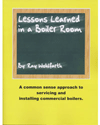Here are my suggestions for preparing to complete a construction administration site visit as the design engineer for the project. This is part two of a four-part discussion on the role of a design engineer when a project moves into the construction phase of work/fee.
As always, the designer should prepare herself for the site visit by uploading specific documents to her laptop, tablet, or iPad. Before she does this, she should know the status of the HVAC installation by reading the latest trade contractor’s weekly meeting minutes and reviewing the HVAC installation status by checking the project installation schedule. Also, call ahead to the project’s mechanical-electrical coordinator to confirm the HVAC installation status, so that the trip out to the site is not wasted. Armed with this information, the designer should upload pertinent documents. For this example, we are going to assume the focus of the designer’s visit will be to complete a tour of a central air handling equipment room, so she should bring the following:
- Approved AHU shop drawing;
- Standard details from the contract drawings showing piping installation;
- Contract drawings showing the sheet metal and piping drawings associated with this equipment room;
- Contract drawing part plan(s) and sections through the AHU equipment room, showing maintenance access and filter and coil removal compliance.
The design should have a standardized installation checklist uploaded that captures all the pertinent information (e.g., motor fan belt installed: yes/no/NA) along with a select few photographs of the installation. If there are issues, such as the fan discharge ductwork is not according to the contract drawings, it is good to insert a note onto the photo with an arrow pointing to the deficiency.
Before leaving for the job site, the designer should make sure she has the following tools and personal protection equipment:
- Camera
- Measuring tape
- Flashlight
- Computer with battery charger
- PPE: safety glasses, hard hat, and orange safety reflector vest, as well as other contractor-specific requirements (e.g., steel-toe shoes)
- Field report document template
Upon arrival to the job site, it is always important to sign in at the construction job site trailer so the contractor knows the designer is on site, and to sign out when leaving the job site. It also doesn’t hurt to review the site visit findings with the mechanical-electrical coordinator, HVAC project supervisor, and/or the job superintendent who should always be on site.
Using my 24-hr “meeting minutes rule,” complete the following:
- Field visit report highlighting the findings from the tour listing the estimated installation completion status
- Complete installation checklist and along with digital photos.
- Corrective action log that covers any shop drawing and contract drawing deficiencies.








